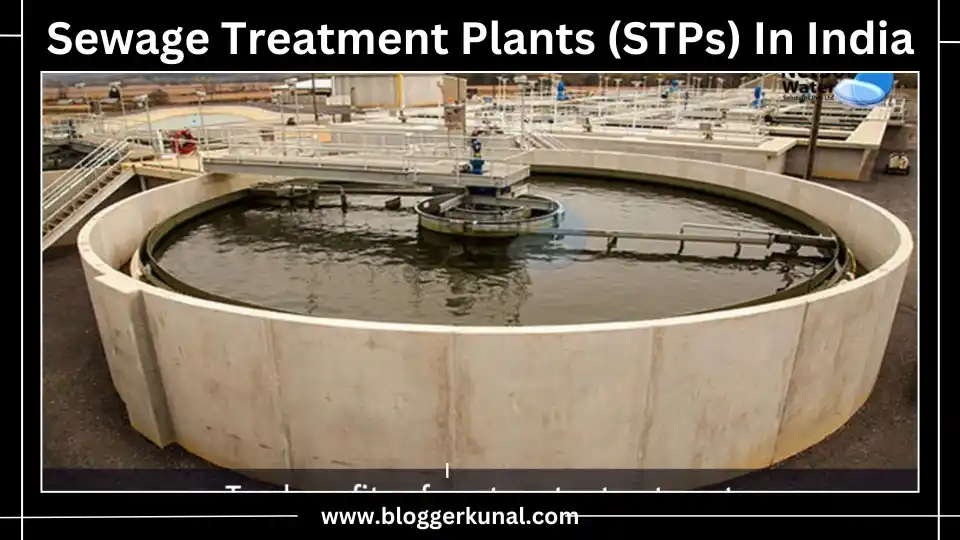According to a report by the Central Pollution Control Board, India produces around 72,368 million liters of wastewater per day (MLD), which severely damages both the local ecological systems and the state of Indian rivers. Over time, rapid industrialization and urbanization have made this issue worse. Through the National River Conservation Plan (NRCP), the Central Government is assisting the states in curbing wastewater and effluents in Indian cities and safeguarding the nation’s water resources. Under this, a number of pollution abatement projects are being undertaken, including the construction of sewage treatment plants (STPs), the interception and redirection of wastewater, the installation of new sewer infrastructure, and improved sanitation facilities.
In India, there were 816 STPs in operation, according to a 2019 report from the CPCB. Due to the addition of new capacity in all of the nation’s cities and metropolises, this figure has increased today. Some of the biggest STPs in the world are being developed in India. The 5 Best Sewage Treatment Plants (STPs) in India that are either built or in operation are as follows:
Read More: Top 10 Wastewater Treatment Companies In India
Top 5 Sewage Treatment Plants (STPs) In India
Read More: Top 20 Solar Power Plants In India
1. Wastewater Treatment Plant in Okhla
In terms of capacity, the 564 MLD STP, or wastewater treatment plant, under construction in Okhla, New Delhi, will be the largest in Asia and the fourth largest worldwide. This plant is a collection of six STPs designed to produce five megawatts of green power from the sludge that is emitted. It was constructed with the newest technology available. A portion of the STP is currently functioning, and a portion will soon be as well. For the first time in any WWTP, the Delhi Jal Board has implemented the UV technology seen in RO plants. The project would help about 40 lakh people, and the Delhi segment of the Yamuna will see a significant reduction in pollution outflow. Under Yamuna Action Plan III, Okhla STP is being built.
Read More: Various Types of Sewage Treatment Plants Used in India
2. Koramangala and Challaghatta (K&C) Valley Project
The three sewage treatment plants in Bangalore that make up this project have a total capacity of 440 MLD. The 134 lakes in the Kolar district will be connected by drain networks that receive treated wastewater from the sewage filtering STP project. The project’s goal is to replenish groundwater aquifers in regions where groundwater levels have dropped to about 100 feet. The extra sludge produced in these Sewage Treatment Plants is not only used to clean wastewater, but it is also transformed into fertilizer. The K&C Valley Project was recently granted permission by the Supreme Court to transport tertiary water from Bangalore to Kolar. A portion of the capacity is currently in use, but other portions were postponed because of COVID-19 regulations.
Read More: Top 10 Real Estate Developers In Bangalore
3. Coronation Pillar STP
One of the largest STPs in the nation, the Coronation Pillar Sewage Treatment Plant in North Delhi was finished by the Delhi Jal Board in March 2022 with the intention of purifying the Yamuna River. Every day, 318 MLD of wastewater can be treated by it. The National Mission for Clean Ganga is responsible for paying half of the capital costs, with the Delhi government covering the remaining half. The STP is presently going through a trial run and is completely automated. The expansive facility is intended to treat wastewater to new standards (biological oxygen demand and total soluble solids less than 10 mg per litre) and is outfitted with cutting-edge phosphate and nitrogen removal equipment.
Read More: Top Real Estate Companies In Noida
4. Kodungaiyur STP
With a capacity to treat over 270 million liters of sewage, this is the largest STP in the Chennai metropolitan area. There are more than a million people living in the Tamil Nadu metro area of Chennai. Three capabilities are combined in Kodungaiyur STP: 110 MLD + 80 MLD + 80 MLD. The current Kodungaiyur STP is intended to receive the sewage produced in Manali and Chinnasekkadu. A document from the state government of Tamil Nadu states that the STP is now processing 230 MLD of sewage per day. The project is run by the Chennai Metropolitan Water Supply and Sewerage Board, or Metrowater. North and Central Chennai waste water is collected by the Kodungaiyur plants. Prior to being released into the sea, it purifies the water. Along with the other STPs in Koyambedu, Nesapakkam, and Perungudi, it plays a significant role in maintaining the cleanliness of the state capital’s water resources, especially the sea.
Read More: Best Real Estate Developers In Pune
5. Kondli Water Treatment Facility
The Delhi Jal Board is developing this East Delhi project under Yamuna Action Plan-III in four stages as well. Two of the projects in Kondli will each have a 45 MLD capacity, while one will have a 114 MLD capacity. 204-MLD is the total capacity as a result. In addition, a unique 200 TPD (tonnes per day) sludge treatment plant is housed within the project, where pavement tiles are manufactured. This is beneficial in two ways: first, the sludge generated during sewage treatment doesn’t need to be carried elsewhere for disposal, and second, the circular economy is strengthened by the tile industry.
Urban local governments have come to realize that using sewage has numerous advantages for the economy and society at large. By using treated sewage, freshwater from aquatic sources such as lakes, ponds, rivers, and groundwater aquifers is used less frequently. Modern technology are enabling Sewage Treatment Plants to become automated, allowing for the rapid treatment of wastewater in limited areas. Additionally, an era of environmentally friendly STPs that lower risks to the environment and public health has begun.
Read More: Top 10 Real Estate Developers In Ghaziabad
